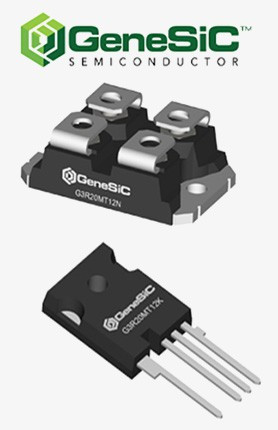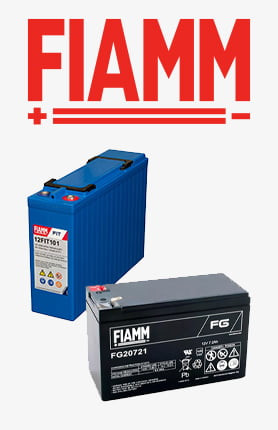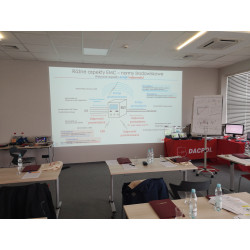trebuie să fii logat
-
întoarce-teX
-
Componente
-
-
Category
-
Semiconductoare
- Diode
- tiristoare
- Module izolate electric
- Redresoare în punte
-
Tranzistoare
- tranzistoare GeneSiC
- Module MOSFET Mitsubishi SiC
- Module MOSFET STARPOWER SiC
- Module MOSFET ABB SiC
- Module IGBT de la MITSUBISHI
- Module de tranzistori MITSUBISHI
- module MITSUBISHI MOSFET
- Module de tranzistori ABB
- Module IGBT de la POWEREX
- Module IGBT - de la INFINEON (EUPEC)
- Elemente semiconductoare din carbură de siliciu
- Accesați subcategoria
- Șoferii
- Blocuri de putere
- Accesați subcategoria
- Traductoare de curent și tensiune LEM
-
Componente pasive (condensatori, rezistențe, siguranțe, filtre)
- Rezistoare
-
Siguranțe
- Siguranțe miniaturale pentru sisteme electronice din seria ABC și AGC
- Siguranțe tubulare cu acțiune rapidă
- Inserții întârziate cu caracteristici GL/GG și AM
- Legături sigure ultra-rapide
- Siguranțe standard britanice și americane cu acțiune rapidă
- Siguranțe cu acțiune rapidă standard european
- Siguranțe de tracțiune
- Siguranțe de înaltă tensiune
- Accesați subcategoria
-
Condensatoare
- Condensatoare pentru motoare
- Condensatoare electrolitice
- Condensatori Icel Film
- Condensatoare de putere
- Condensatoare pentru circuite DC
- Condensatoare de compensare a puterii
- Condensatoare de înaltă tensiune
- Condensatoare pentru încălzire prin inducție
- Condensatoare de impulsuri
- Condensatoare DC LINK
- Condensatoare pentru circuite AC/DC
- Accesați subcategoria
- Filtre anti-interferențe
- Supercondensatoare
- Protecție la supratensiune
- Filtre de emisii revelatoare TEMPEST
-
Descărcător de supratensiune
- Descărcătoare de supratensiune pentru rețeaua de curent alternativ
- Descărcătoare de supratensiune pentru rețea de curent continuu
- Limitatoare de joasă tensiune ALVL
- Limitatoare de joasă tensiune PG
- Descărcătoare de trăsnet pentru rețele de curent alternativ până la 1000V
- Dispozitive de măsurare
- Accesați subcategoria
- Accesați subcategoria
-
Relee și Contactoare
- Teoria releelor și contactoarelor
- Relee cu stare solidă trifazată CA
- Relee cu stare solidă DC
- Regulatoare, sisteme de control și accesorii
- Porniri ușoare și contactoare inversoare
- Relee electromecanice
- Contactoare
- Comutatoare rotative
-
Relee cu stare solidă CA monofazate
- Relee cu stare solidă CA monofazate Seria 1 | D2425 | D2450
- Relee semifazate CA monofazate, seria CWA și CWD
- Relee semifazate CA monofazate seriile CMRA și CMRD
- Relee cu stare solidă CA monofazate Seria PS
- Relee cu stare solidă AC seria duble și cvadruple D24 D, TD24 Q, H12D48 D
- Relee monofazate din seria GN
- Relee cu stare solidă CA monofazate Seria CKR
- Relee monofazate pentru șină DIN AC SERIA ERDA și ERAA
- Relee AC monofazate pentru curent de 150A
- Relee duble cu stare solidă integrate cu radiator pe șină DIN
- Accesați subcategoria
- Relee cu stare solidă imprimabile monofazate CA
- Relee de interfață
- Accesați subcategoria
- Miezuri și alte componente inductive
- Radiatoare, Varistoare, Protectie termica
- Fani
- Aer conditionat, Accesorii tablou, Racitoare
-
Baterii, încărcătoare, surse de alimentare tampon și convertoare
- Baterii, încărcătoare - descriere teoretică
- Baterii litiu-ion. Baterii personalizate. Sistem de management al bateriei (BMS)
- baterii
- Incarcatoare de baterii si accesorii
- UPS și surse de alimentare tampon
- Convertoare si accesorii pentru fotovoltaice
- Stocarea energiei
- Pile de combustibil cu hidrogen
- Celule litiu-ion
- Accesați subcategoria
-
Automatizare
- Elevatoare Spiralift
- Piese pentru drone Futaba
- Întrerupătoare de limită, Micro întrerupătoare
- Senzori, traductoare
- Pirometre
- Contoare, relee de timp, contoare de panou
- Echipament industrial de protectie
- Semnale luminoase și sonore
- Cameră termică
- Afișaje LED
- Butoane și întrerupătoare
- Accesați subcategoria
-
Cabluri, fire Litz, Conduite, Conexiuni flexibile
- Firele
- Presetupe și manșoane
- Chipurile
-
Cabluri pentru aplicatii speciale
- Cabluri de prelungire și compensare
- Cabluri de termocuplu
- Cabluri de conectare pentru senzori PT
- Cabluri cu mai multe fire de temperatură. -60°C până la +1400°C
- Cabluri de medie tensiune SILICOUL
- Cabluri de aprindere
- Cabluri de incalzire
- Cabluri cu un singur conductor temp. -60°C până la +450°C
- Fire de cale ferată
- Cabluri de încălzire în ex
- Cabluri pentru industria de apărare
- Accesați subcategoria
- tricouri
-
Impletituri
- Impletituri plate
- Impletituri rotunde
- Impletituri foarte flexibile - plate
- Impletituri foarte flexibile - rotunde
- Impletituri cilindrice de cupru
- Impletituri si capace cilindrice din cupru
- Curele flexibile de împământare
- Impletituri cilindrice din otel zincat si inoxidabil
- Impletituri de cupru izolate PVC - temperatura de pana la 85 de grade C
- Impletituri plate din aluminiu
- Kit de conectare - impletituri si tuburi
- Accesați subcategoria
- Echipament de tracțiune
- Capse de cablu
- Sine flexibile izolate
- Sine flexibile multistrat
- Sisteme de management al cablurilor
- Accesați subcategoria
- Vezi toate categoriile
-
Semiconductoare
-
-
- Furnizori
-
Aplicații
- Automatizare HVAC
- Automatizare industrială
- Băncile de energie
- Cercetare si masuratori de laborator
- Componente pentru zonele cu pericol de explozie (EX)
- Echipament industrial de protectie
- Echipamente pentru dulapuri de distributie si control
- Exploatare minieră, metalurgie și turnătorie
- Imprimare
- Încălzire prin inducție
- Inginerie energetică
- Mașini CNC
- Masini de sudura si sudori
- Mașini de uscare și prelucrare a lemnului
- Masini pentru termoformarea materialelor plastice
- Măsurarea și reglarea temperaturii
- Motoare si transformatoare
- Surse de alimentare (UPS) și sisteme redresoare
- Tracțiune cu tramvai și feroviar
- Unități DC și AC (invertoare)
-
Instalare
-
-
Inductori
-
-
Dispozitive de inducție
-
-
Serviciu
-
- Kontakt
- Zobacz wszystkie kategorie
Basics of Electromagnetic Compatibility: What It Is and Why It's Important? 1 of 8

Basics of Electromagnetic Compatibility: What It Is and Why It's Important? 1 of 8
Definition of Electromagnetic Compatibility (EMC)
Electromagnetic Compatibility (EMC) is a field of science and engineering that deals with preventing electromagnetic interference and ensuring that electronic devices and systems can operate alongside each other without mutual electromagnetic interference. In short, EMC concerns the ability of devices to function in environments with various sources of electromagnetic disturbances and minimize their impact on other devices.
In today's world, where electronics and communication systems are widely used in various fields such as industry, transportation, medicine, and telecommunications, issues related to EMC are of immense importance. Without proper electromagnetic compatibility, there is a risk of disturbances that can lead to system failures, data loss, and even pose a threat to user safety.
Within the field of Electromagnetic Compatibility, there are standards and regulations that define the minimum requirements for electromagnetic emissions and immunities. Organizations such as the International Electrotechnical Commission (IEC) and the Federal Communications Commission (FCC) develop standards that must be followed to meet EMC requirements. Compliance with these standards allows for effective cooperation between different electronic devices and minimizes the risk of electromagnetic interference.
It is important for manufacturers, designers, and engineers to have an awareness and understanding of Electromagnetic Compatibility and to implement appropriate techniques for designing, testing, and securing devices to ensure their reliability, durability, and compliance with regulations. Through proper EMC practices, the risk of electromagnetic interference can be minimized, thereby ensuring stable and safe operation of electronics in various environments.
Basic Principles of Electromagnetic Compatibility (EMC):
Electromagnetic Compatibility (EMC) is based on several key principles aimed at minimizing electromagnetic interference and ensuring the uninterrupted operation of electronic devices and systems. Here are the basic principles of EMC:

Principle of Emission
This principle concerns controlling the electromagnetic interference emissions generated by devices. Electronic devices can produce various types of electromagnetic signals that can interfere with the operation of other devices. The task of EMC is to limit these emissions by employing appropriate design techniques, shielding, filtering, and other measures to minimize the generation of electromagnetic disturbances.

Principle of Immunity
This principle pertains to the resistance of devices to electromagnetic disturbances originating from other sources. Electronic devices should be resilient to electromagnetic disturbances that may occur in the environment, such as radio signals, electromagnetic fields, or electrical surges. Through proper design, shielding, attenuation, and other techniques, devices can be more resistant to disturbances and maintain their operational integrity.

Principle of Separation
This principle concerns ensuring adequate separation between devices to avoid mutual electromagnetic interference. Devices should be designed and placed in such a way as to minimize interaction between them. Examples of actions consistent with this principle include proper cable and wire arrangement, use of screens and shields, and appropriate spatial planning of electronic systems.
Principle of Control
This principle involves monitoring and controlling the quality of signals and voltages in electronic devices. By monitoring and regulating electrical signals and eliminating unwanted interference, the quality and stability of device operation can be effectively controlled.
Understanding and applying these basic principles of EMC is crucial for designers, engineers, and manufacturers of electronic devices. By adhering to these principles, the risk of electromagnetic interference can be minimized, ensuring reliability, durability, and compliance with regulatory requirements for electronic devices.
The Essence and Significance of Electromagnetic Compatibility (EMC) in Today's Technological Environments:
In today's digital world, where electronic devices and communication systems are an integral part of our lives, the essence of Electromagnetic Compatibility (EMC) is becoming increasingly important. EMC is crucial for ensuring the uninterrupted operation of devices and systems in the presence of diverse sources of electromagnetic disturbances.
The main objective of EMC is to minimize electromagnetic interference, which can cause failures, malfunctions, data loss, or even risk to user safety. The introduction of electromagnetic disturbances can lead to communication interference, instability in device operation, transmission errors, and contribute to performance limitations and improper functioning of electronic control systems.
It is important to understand that in today's technological environments, there are many different sources of electromagnetic disturbances. This may include radio transmissions, telecommunication systems, power grids, electric motors, medical devices, and even everyday consumer electronics. The impact of these disturbances on the operation of other devices can be significant and lead to serious consequences.
Therefore, the significance of EMC cannot be underestimated. Compliance with EMC principles and standards is not only a legal requirement in certain industries but also a necessary condition for ensuring the reliability, durability, and safety of electronic devices. EMC practices allow for the identification, control, and minimization of both electromagnetic emission and immunity disturbances, as well as the appropriate design, testing, and protection of electronic systems.
In the present times, when technology and electronics are integral parts of our professional and personal lives, proper EMC management is incredibly important. It contributes to ensuring the reliability of our devices, minimizing the risk of failures, protecting the health and safety of users, and facilitating stable and efficient operation in diverse environments.
Related product
Related posts
 Now available – DC/DC converters from PREMIUM
Now available – DC/DC converters from PREMIUM
 New release in DACPOL lighting for lathes – Kira covers
New release in DACPOL lighting for lathes – Kira covers





Leave a comment